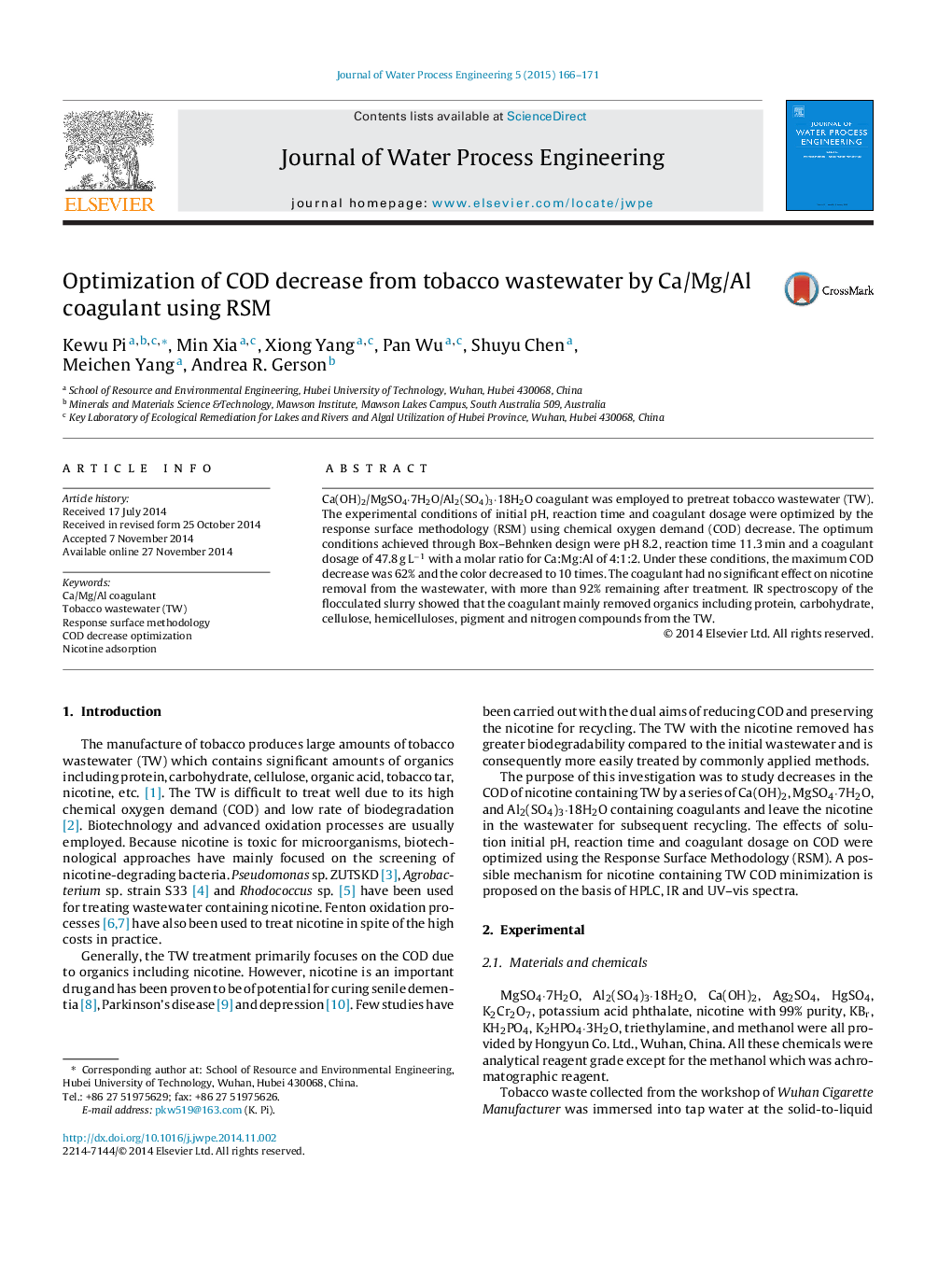| Article ID | Journal | Published Year | Pages | File Type |
|---|---|---|---|---|
| 232688 | Journal of Water Process Engineering | 2015 | 6 Pages |
Ca(OH)2/MgSO4·7H2O/Al2(SO4)3·18H2O coagulant was employed to pretreat tobacco wastewater (TW). The experimental conditions of initial pH, reaction time and coagulant dosage were optimized by the response surface methodology (RSM) using chemical oxygen demand (COD) decrease. The optimum conditions achieved through Box–Behnken design were pH 8.2, reaction time 11.3 min and a coagulant dosage of 47.8 g L−1 with a molar ratio for Ca:Mg:Al of 4:1:2. Under these conditions, the maximum COD decrease was 62% and the color decreased to 10 times. The coagulant had no significant effect on nicotine removal from the wastewater, with more than 92% remaining after treatment. IR spectroscopy of the flocculated slurry showed that the coagulant mainly removed organics including protein, carbohydrate, cellulose, hemicelluloses, pigment and nitrogen compounds from the TW.
